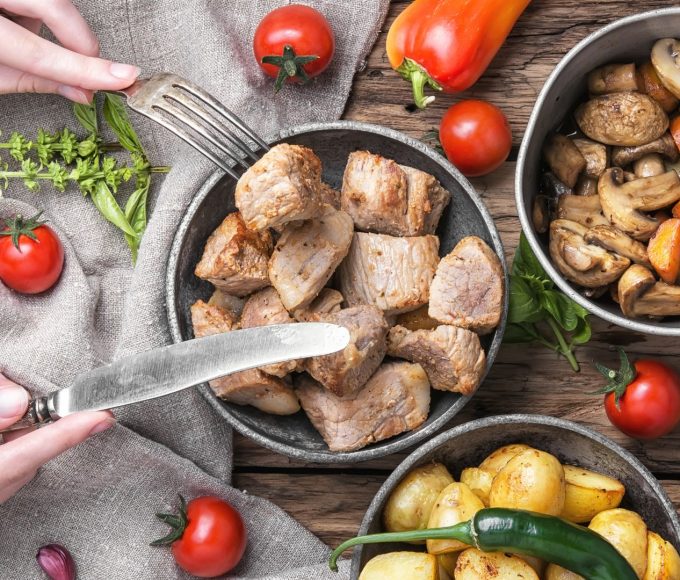Accidents happen, whether you’re within the confines of your own home, or outside exploring the great outdoors. Scrapes, cuts, falls, burns – any one of those things can happen unexpectedly. For this reason, it is important to know basic first aid measures so you are equipped to respond in these situations.
First aid is a set of basic survival skills that are very important to have. It can be the deciding factor between life and death. It can buy us time during an emergency crisis until professional help arrives. Here are some first aid interventions for common medical mishaps at home and outdoors.
Cuts And Scrapes
We’ve all been there, kids and adults alike. Cuts and scrapes are a part of everyday life. All it takes is one little glance away from the chopping board, and you’ve cut your finger. Or a trip on the rough pavement, and you’ve scraped your knees and elbows.
Wash cuts and scrapes under cool, running water. Carefully rinse off any visible dirt and debris. Minor cuts will spontaneously stop bleeding on their own. While deeper cuts will bleed more. If this is the case, apply gentle but firm pressure on the cut using a gauze. Keep pressing on the area until bleeding subsides.
Cover the cut and scrape using sterile dressing. Keep the area clean at all times and be sure to change dressing regularly to prevent infection.
Minor cuts and abrasions usually heal without seeing a doctor. However, if the bleeding persists, this usually means the wound is deep and may require stitching. Open, gaping wounds may require stitching as well. If you start developing fever and the cut becomes increasingly swollen and inflamed, it is best to call your doctor, as it could be a sign of infection.
Severe Bleeding
Bleeding as a result of an injury is very common, and it’s important to know what first aid measures are needed to control it. Massive bleeding is a medical emergency and if not treated, can result in hypovolemic shock and death. With severe bleeding, a person can lose as much as 40% of blood volume in as little as 3 to 4 minutes. In children, it can be a lot quicker and more life threatening.
There are two types of bleeding – external and internal bleeding. External bleeding is visible and can be addressed right away. On the other hand, internal bleeding happens inside the body and is less obvious, but just as fatal as external bleeding.
The first thing to do would be to call an ambulance right away. While waiting for the ambulance, take the time to calm and reassure the person. Make the person lie down. If the bleeding is in an arm or a leg, elevate the limb above heart level. Do not remove any object that is embedded in the wound, as this can cause even more blood loss.
Using a folded cloth or bandage, apply direct pressure on the affected area to control the bleeding. If blood soaks through, add more clothing or bandage and keep applying firm pressure. When direct pressure fails to control the bleeding, consider using an improvised tourniquet if applicable.
A tourniquet should be 4 cm wide and not too thin, to prevent localized damage to nerve tissue which can result in amputation. Tie the tourniquet approximately 5 cm above the bleeding wound. The use of tourniquets is controversial and many experts believe it does more harm than good. Tourniquets should be used with caution and only when all other interventions prove insufficient.
Choking
All of us have experienced choking on our food. There are times when food just goes down the wrong pipe and this results in choking. We usually just laugh about it when it happens, but choking is no laughing matter. Choking can be catastrophic and is one of the leading causes of death in children and elderly people. A choking death occurs every 2 hours.
Choking is the obstruction of a person’s airway due to food or an object. Candies and coins account for 37% of choking hazards in toddlers. Signs of choking include gagging, gasping for air, face turning blue, hand clutching at the throat, inability to talk or yell, and a frightened look.
The first aid for choking is the Heimlich Maneuver. It is a life-saving technique that rescuers perform on choking victims. The first step in the Heimlich Maneuver is to stand behind the person and lean them slightly forward. Next, wrap your arms around the person’s waist. Clench a fist and position it between the navel and rib cage. Grab your fist with your other hand, and pull the clenched fist sharply backward and upward in 5 quick but forceful thrusts. Repeat the thrusts until the obstructing object is expelled or until help arrives.
Burns
Burns can be from something as simple as cooking, to something as horrific as being caught in a fire. The first step in giving first aid to a burn victim is to put a stop to the burning process. If a chemical is causing the burn, rinse it off quickly. For electrical causes, cut off the power supply right away. When fire is the cause, put it out as quickly as possible by rolling the person on the ground to smother the flames.
For minor burns, start by holding the burnt area under cool (not cold) running water. You can also apply a cool wet compress on the area. This will help ease the pain. Once it is completely cool apply moisturizer, or aloe vera if you have one, to provide relief.
Do not break blisters that form as they protect the area from infection. After that, loosely cover the area with sterile gauze to protect it from external elements. Remember also not to put any butter or oily remedies to a burn. Butter and oily substances retain more heat, which can worsen the severity of the burn.
Major burns are serious and should be given medical attention as soon as possible. Call an ambulance right away. While waiting for emergency help, there are several first aid measures that you can do. First is to make sure the cause of the burn has been eliminated and the patient is safe. Regularly check that the person is breathing. Remove any constricting items such as jewelry or belts. Do not immerse large burns in water, as this can result in further loss of body heat.
Next is to cover the area with gauze or clean cloth, and raise it above the level of the heart. Watch the burn victim closely for signs of possible shock. This includes fainting, cold, pale or clammy skin, or shallow breathing.
There are many other first aid measures for different types of injuries and accidents. Although not many are skilled in giving first aid, it is a skill that all of us should acquire. You never know when somebody’s life will depend on you in an emergency.
After a serious injury, what happens next? How do you cope? This post may help you out: Healing Your Body And Soul After A Serious Injury
Many injuries happen in the work place. Learn more about it here: Injuries On The Job: 4 Tips That Every business Owner Needs To Know



















